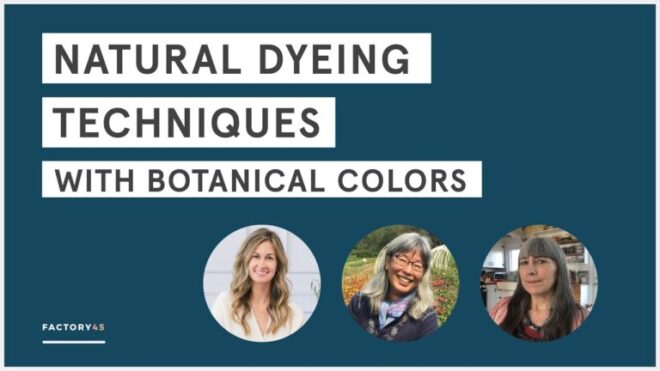In the fashion industry, the shift towards sustainability is becoming increasingly important. One key aspect of this movement is the adoption of sustainable dyeing techniques. By using natural and non-toxic dyes, fashion brands can reduce their environmental impact while still creating vibrant and beautiful colors. In this article, we will explore the benefits of sustainable dyeing techniques and how they are shaping the future of fashion.
What dye is the most environmentally friendly?
Looking for an environmentally friendly dye option? Look no further than natural sources like indigo, root dye, turmeric, and henna. These plant-based dyes are not only eco-friendly but also provide a wide range of vibrant colors. Additionally, the use of animals like cochineal and shellfish for red and purple dyes, as well as minerals like ocher, iron oxide, and copper for earthy tones, offer a sustainable and beautiful alternative to synthetic dyes.
By choosing natural dyes derived from plants, animals, and minerals, you can reduce your environmental impact while still enjoying a colorful wardrobe. These dyes not only provide rich and diverse hues but also support sustainable practices in the fashion industry. Whether you’re looking for a bold red, a calming blue, or a warm earthy tone, natural dyes offer a wide range of options that are both environmentally friendly and visually appealing. So go ahead, make a conscious choice for the planet and embrace the beauty of natural dyes.
From roots to leaves to flowers, different parts of plants can yield a variety of colors for natural dyes. By exploring the world of plant-based dyes, you can discover a plethora of hues that are gentle on the environment and on your skin. So next time you’re in need of a dye for your clothing or textiles, consider the beauty and sustainability of natural dyes.
What eco-friendly dyeing technique is used in fashion?
One eco-friendly dyeing technique used in fashion is natural dyeing, which involves using dyes made from plants, minerals, and other natural sources to color fabrics. This technique not only reduces the use of harmful chemicals and water consumption but also promotes sustainability in the fashion industry. Additionally, natural dyeing creates unique and beautiful colors that cannot be replicated with synthetic dyes, making it a popular choice for environmentally-conscious fashion brands and consumers.
How environmentally friendly is natural dyeing?
Natural dyeing is a sustainable practice that offers a plethora of environmental benefits. One of the key advantages is that natural dyes are fully biodegradable, ensuring that they do not harm the environment once their use is complete. This makes natural dyeing a eco-friendly alternative to synthetic dyes, as it helps to reduce the pollution caused by toxic chemicals.
Revolutionizing Textile Coloration: Efficient Sustainable Dyeing Methods
Textile coloration is undergoing a revolution with the development of efficient and sustainable dyeing methods. Traditional dyeing processes often involve a significant amount of water, energy, and chemicals, leading to environmental pollution and resource depletion. However, innovative techniques such as digital printing, ultrasonic dyeing, and natural dye extraction are paving the way for a more sustainable and environmentally friendly approach to textile coloration. These methods not only reduce the consumption of water and energy but also minimize the use of harmful chemicals, making them a game-changer in the textile industry.
One of the most promising advancements in textile coloration is the use of digital printing, which allows for precise and efficient application of colorants onto fabrics. This method eliminates the need for large quantities of water and chemicals typically used in traditional dyeing processes, resulting in minimal waste and environmental impact. Furthermore, digital printing enables customization and on-demand production, reducing inventory and waste in the supply chain. By revolutionizing the way textiles are colored, digital printing is setting a new standard for sustainability in the industry.
In addition to digital printing, ultrasonic dyeing is another innovative method that is revolutionizing textile coloration. By utilizing ultrasonic waves to drive the dye into the fabric, this technique significantly reduces the consumption of water, energy, and chemicals. The process is not only more efficient but also minimizes the environmental footprint of textile coloration. With these efficient and sustainable dyeing methods, the textile industry is taking a significant step towards a more environmentally conscious and responsible approach to coloration.
Innovative Eco-Friendly Dyeing Solutions for a Greener Future
Our innovative eco-friendly dyeing solutions offer a sustainable alternative for a greener future. By utilizing cutting-edge technology and natural ingredients, we are able to reduce water consumption, eliminate harmful chemicals, and minimize waste in the dyeing process. Our commitment to environmental responsibility ensures that our products not only meet high-quality standards but also contribute to a cleaner and healthier planet. Join us in revolutionizing the textile industry with our forward-thinking approach to dyeing.
Maximizing Sustainability in Textile Dyeing: Efficient Techniques
In the realm of textile dyeing, the importance of maximizing sustainability cannot be overstated. By implementing efficient techniques, we can significantly reduce the environmental impact of the dyeing process. From utilizing eco-friendly dyes to optimizing water and energy usage, there are various methods that can be employed to achieve sustainability goals in textile dyeing.
One key strategy for maximizing sustainability in textile dyeing is to invest in innovative technologies that minimize waste and pollution. By adopting advanced dyeing machines and processes, manufacturers can achieve higher levels of efficiency and reduce their carbon footprint. Additionally, by prioritizing the use of renewable energy sources and implementing closed-loop systems, we can further enhance the sustainability of textile dyeing practices.
The Future of Fashion: Sustainable and Efficient Dyeing Practices
In the ever-evolving world of fashion, the future is bright with sustainable and efficient dyeing practices. With a growing emphasis on environmental consciousness, designers and manufacturers are turning to innovative methods that minimize water waste, reduce chemical usage, and lower energy consumption. By incorporating these practices into their production processes, the fashion industry is not only reducing its environmental impact but also setting a new standard for responsible and ethical design.
The future of fashion lies in embracing sustainable and efficient dyeing practices. From natural dyes to water-saving techniques, the industry is moving towards a more eco-friendly approach that prioritizes environmental preservation. By adopting these methods, designers can create beautiful garments that not only look good but also do good for the planet. It is time for the fashion world to come together and pave the way for a more sustainable and ethical future.
By implementing sustainable dyeing techniques, the fashion industry can significantly reduce its environmental impact and contribute to a more sustainable future. From natural dyes to innovative processes that minimize water and chemical usage, there are numerous ways for brands to make a positive difference. By prioritizing sustainability in their production methods, fashion companies can not only protect the planet but also meet the growing demand for ethical and eco-friendly products. Embracing sustainable dyeing techniques is not only a step in the right direction, but a necessary shift towards a more responsible and environmentally-conscious industry.



